We have dedicated a lot of attention so far to really complex cards, abilities and interactions between them, but from time to time I get questions like
- “Do I play one mana every turn?”
- “Please explain what Black Lotus does, do I destroy it and instead draw 3 colorless mana from my library to the hand, or put onto the battlefield, or wut?”
- “With Elvish Mystic, if I activate its ability I may put a forest into play, right?”
and many other, and that pushed me towards thinking that even the most simple concepts in Magic need careful explaining every now and then.
So today we shall talk about Llanowar Elves, mana and lands.

Oracle Text:
Creature — Elf Druid
{T}: Add {G}.
Greetings, young padawan!
Dost thou know what “asymmetrical dualism of a language unity” means? Linguists use this expression to denominate the fact that a word does not fully reflect a concept, that different people understand the word differently by catching different semantic content in it.
Well, now that you play Magic, you may forget about that horrendous expression. Although, I am rather certain that today is the first time in your life you’ve heard of that expression anyway.
Magic is a card game. It is a turn-based game. All of it is true, but there’s another solid point: it is a game based on verbal expressions. These expressions use terms. Almost each term has only one definite meaning, and it doesn’t accept loose interpretation. (And in cases if that is not true, we are probably dealing with homonyms: “to draw a card (verb)” vs. “to end a game in a draw (noun)” ; “counter a spell (verb)” vs. “put a charge counter (noun)” etc.) Different terms define different concepts. If you understand this in the core rule at once, and learn to use the terms, then neither the texts of the most verbose cards, nor the most sophisticated rulings can daze you anymore.
The rules in Magic are surprisingly simple and logical. You don’t think? How does MTGO work then, where all the rules are supported by the computer? They could not have been algorithmized were they not logical, and we would then never have had any online Magic.
Without further ado, let’s get to our topic.
Mana
Mana is magical energy that a mage uses to cast spells. Mana is the main resource of the game; conditionally speaking, it’s an equivalent of money in Magic world. To get a spell, you need to pay it. Sometimes you recur to a natural exchange: pay a cost with life, sacrifices etc. But the overwhelming majority of spells and abilities are paid with mana alone.
Mana is not represented physically in any way in a game. It is a virtual currency. It is kept in a virtual purse — mana pool. Why do we not use any techy counters to count mana? Well, we may, but normally we use the mana straight after using it. And besides, mana pools empty at the end of each step or phase anyway.
Any time we use mana, if we do not use up all the mana in our mana pool, we must announce which mana we use. If we pass priority with mana still left in our mana pool, we are bound to announce which mana is left there.
If a player produces a lot of mana of different types and uses some of that mana in-between, it’s clearly easy to get confused. Some decks do have a need for ways to count mana thoroughly, such as Modern Storm. They recur to different ways of visualizing the contents of their mana pool, usually by using dice of different colors, or writing all changes in their mana pool down on a paper.
There are six different types of mana:
- white — denominated as {W}
- blue — denominated as {U}, it’s U because B goes for black
- black — denominated as {B}
- red — denominated as {R}
- green — denominated as {G}
- colorless — denominated as {C}.
There are many more mana symbols than mana types:
- Regular colored mana symbols

- Colorless mana symbol

- Symbols for generic mana costs
 etc. (these may be paid by mana of any type)
etc. (these may be paid by mana of any type) - Hybrid mana symbols

- Mono-hybrid mana symbols

- Phyrexian mana symbols

- Hybrid Phyrexian mana symbols

- Snow mana symbol

Mana symbols are used in two main cases: to determine a mana cost, and to describe an effect adding mana to the mana pool. In the latter, there can only be the symbols of the first two bullets above. You cannot gain hybrid or snow mana, just because there is neither hybrid, nor phyrexian, nor snow mana as such. There are only symbols that describe a cost that may or must be paid in a particular way. For instance, the so called “snow mana” is any mana earned from a permanent with Snow supertype. You may find the snow mana symbol in costs of spells and abilities, but you will never read it in the text of an effect producing mana.
Now take a look at Llanowar Elves. You can find the symbol of green mana in two places: in the mana cost in the top right corner, and in the effect of its mana ability, in the center of the card.
What you see in the mana cost and in the ability text of Llanowar Elves is not lands, but mana symbols!
How do we gain mana?
Mana may be gained through mana and non-mana abilities and some spells:

Llanowar Elves has an activated mana ability which adds one green mana to our mana pool.
Lotus Cobra has a non-mana ability that can add one mana of any color to our mana pool.
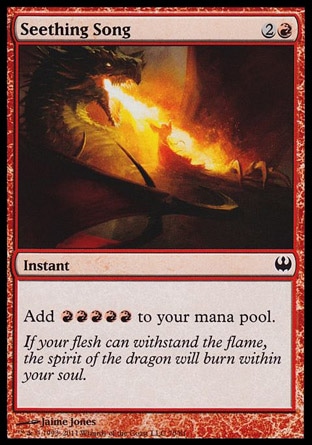
The Seething Song spell adds five red mana to our mana pool on resolution.
These spells and abilities add mana to the mana pool. They have nothing to do with lands. If a spell searches for a land in the library, or puts one from the hand onto the battlefield, the text will say so: “search for a land” or “search for a Forest” , or “put a land card onto the battlefield” etc.
Mana and lands are fundamentally different concepts!
Mana is a virtual currency in Magic. Land is a card type; lands usually, but not necessarily have an ability to produce mana.
Each basic land has a mana ability: “{TAP}: add {mana symbol}” .
Check out the forest:
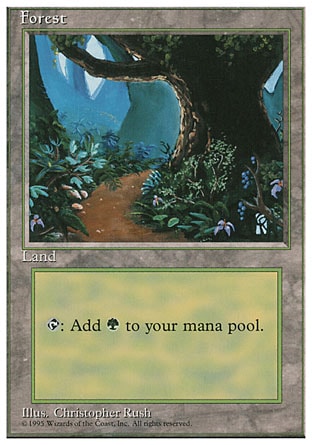
Old edition lands contained the full ability text. This ability is exactly the same as that of Llanowar Elves!
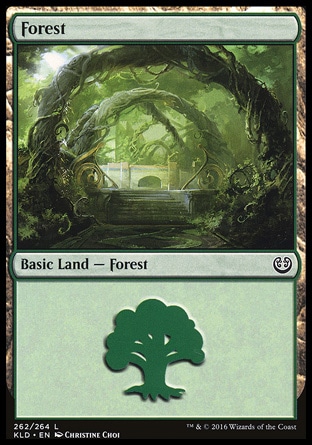
Contemporary lands only have the mana symbol depiction. It seems, that’s the reason why some newbie players get confused with this.

Some basic lands don’t have any colored mana symbols depitcted on them at all and no ability text printed on them. But they are still basic lands; they have the mana ability, regardless if it’s printed there or not.
Since the activation cost of an ability Llanowar Elves it’s a tap symbol, you will not be able to declare Llanowar Elves attacking, and then getting their mana. Conversely, you will not be able to get mana and then send the Elves to attack. Note that just tapping Llanowar Elves (as a result of attack or an effect of some spell or ability) doesn’t activate their abilities. To get mana you need to activate the ability of the Elves, and not just tap them.

Since Llanowar Elves is a creature, and its activated ability cost contains a tap symbol, you may only activate this ability as long as you have controlled the Elves since the beginning of your last turn. This rule is generally referred to as “summoning sickness” .
If the Elves isn’t summoning-sick, you may activate its ability any time you have priority or when you need to pay a mana cost (for instance, while playing a spell).
Mana abilities do not use the stack and resolve immediately after activating them. They may not be responded to.
Llanowar Elves is a very useful card. You will find it, or its functional reprints, in nearly every deck using green color and requiring a lot of mana for quick development. As a rule, such decks want to play the Elves on the first turn. That will provide the pilot of the deck with three mana sources on the next turn: two lands and the Elves. Sometimes that’s enough to get ahead on developing the board and winning the game.
Translated by Witas Spasovski
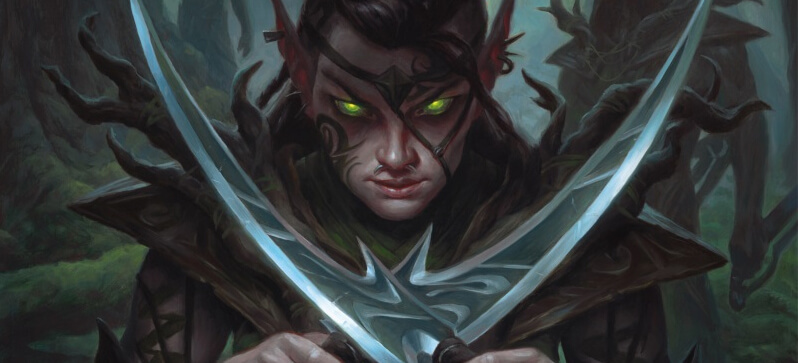
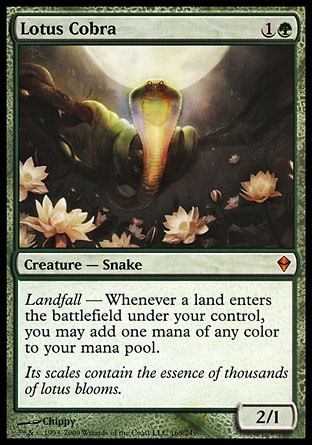
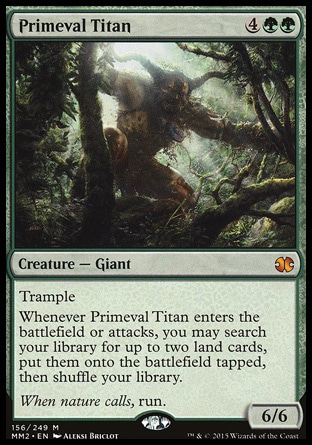
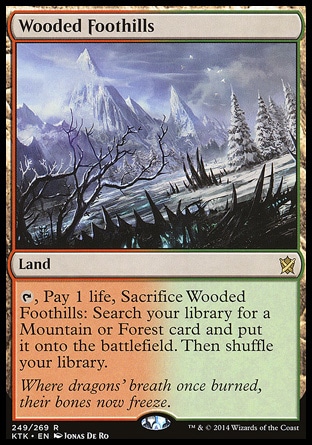
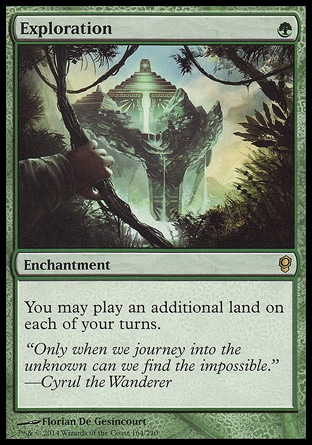
These cards do not do anything with mana. They interact with lands.